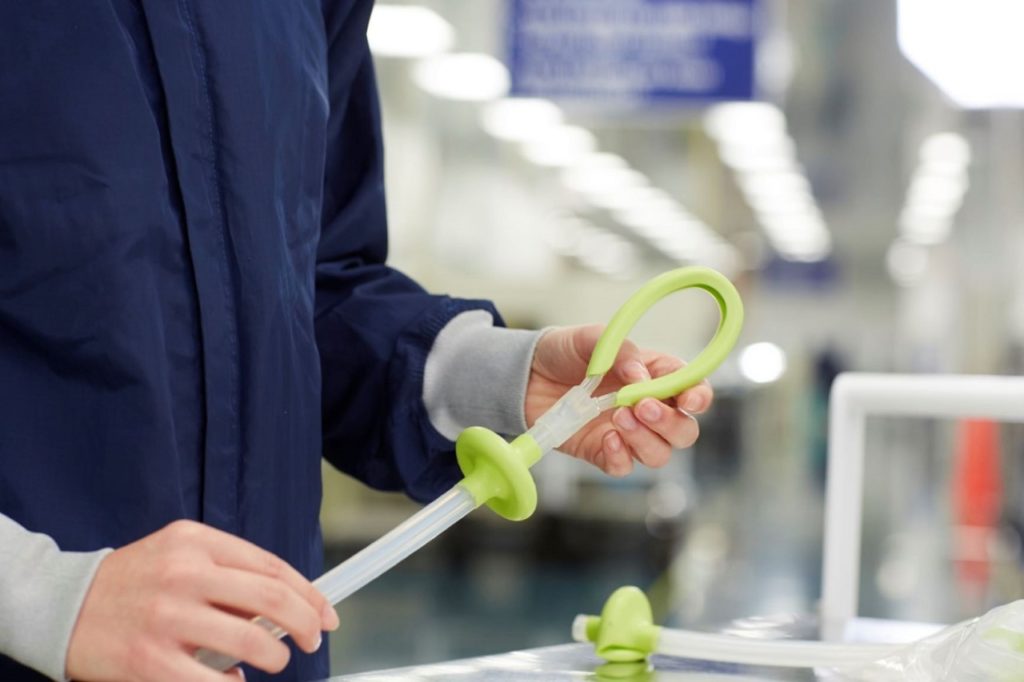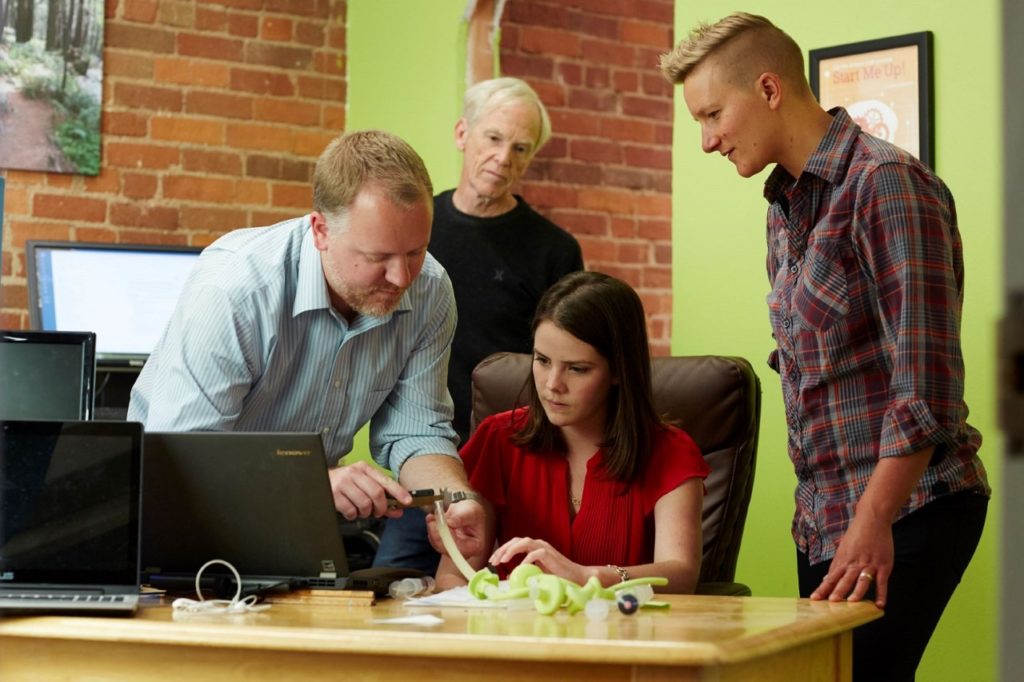Nine years after he began working on a senior project that sought to treat post-partum hemorrhaging, Davis Carlin recently learned that his device had been cleared by the Food and Drug Administration, a crucial step that could save the lives of tens of thousands of women worldwide.
“The whole experience, especially with the recent FDA clearance, has been surreal,” said Carlin, who earned his degree in biomedical engineering in 2012. “I didn’t originally come to Cal Poly thinking I would help start a company or that I would get to be a part of something with the potential to have this kind of impact.”
Postpartum hemorrhaging is excessive bleeding following the birth of a baby. Excessive and rapid blood loss can cause a severe drop in the mother’s blood pressure and may lead to shock and death if not treated, according to the Mayo Clinic.
“It’s the leading direct cause of maternal death in the world,” said Sara Della Ripa, now a lecturer in the Biomedical Engineering Department, who began working with the startup as a student intern in 2016.
According to the Centers for Disease Control and Prevention, the number of reported pregnancy-related deaths in the United States in 2016 was 16.9 deaths per 100,000 live births –- up from from 7.2 deaths per 100,000 live births in 1987. From 2011 to 2014, the pregnancy-related mortality ratios for Black women were more than three times higher than for white women.
“Worldwide, women experience PPH in 10.8% of all deliveries, causing 186,500 deaths per year,” said Colby Holtshouse, chief operating officer of Alydia Health, which now owns the device. “And here in the U.S., we have the worst rate of maternal deaths in the developed world.”
In 2011, Carlin and fellow senior Alex Norred began working on a senior project that would address the problem.
“We were working with Path, a non-profit global health organization based in Seattle, to develop a low-cost option for treating postpartum hemorrhage,” Carlin said. “The concept for this device was one of multiple pitches to Path as part of our design team process, and Path ultimately asked us to go a different route. Alex and I felt like the idea still had a lot of potential, so we decided to pursue it separately, with Path’s permission.”

Norred developed the the initial concept and design, and the two students worked with OB-GYN’s to refine it. The system is a thin silicone tube that is placed in the uterus that creates a gentle vacuum to induce the postpartum contraction that normally occurs after childbirth.
“What was so brilliant about Alex’s original concept was how both novel and counterintuitive it was,” Carlin said. “Using a suction to stop the bleeding. Yet, if you thought about it, in terms of what the uterus needs to do to stop the bleeding, it also made complete sense.”
At the time, postpartum hemorrhaging was often treated with a device called uterine balloon tamponade, which inflates within the uterus.
“In their research process, the engineers came to understand this balloon was working in opposition to the natural and needed contraction of the uterus that occurs after childbirth,” Holtshouse said. “They conceived of vacuum as a gentle and physiologic method to contract the uterus and control bleeding.”
So the concept and design created by Carlin and Norred helped the uterus perform its normal function, Della Ripa said.
“It works with the physiology instead of against it,” she said.
Eventually, Carlin sought help from then-business student Jessie Becker and Nathan Bair, a medical device engineer based in San Luis Obispo, to form a company, which would initially be called InPress Technologies.
Their idea was presented at the Innovation Quest, supported by the Center for Innovation and Entrepreneurship (CIE), and they eventually worked out of the HotHouse, which works with Cal Poly students and members of the public who have ideas for startups.
“CIE helps startups like this first and foremost by providing support and mentorship to the students before there is even a startup formed,” said Tom Katona, assistant professor of innovation and entrepreneurship.
The CIE’s 13- week Summer Accelerator program helped with further mentoring, connections, financial support and training.
“The program prepares them to transition from an innovative student project to an actual business venture,” Katona said.
After Carlin and Norred graduated and began their careers, other students, including Della Ripa, continued to work on advancing the device so it could be used on a wider scale.
Della Ripa, who would later perform fieldwork in Uganda, knew the device could make a difference.
“Up to 94 percent of deaths from postpartum hemorrhaging could have been prevented,” she said.

Eventually, others took up the cause, and InPress changed its name to Alydia Health. The company, now based in Menlo Park, named the device Jada and secured funding from investors while seeking FDA approval.
“There was always the question of, ‘But will this actually work?’” Carlin said. “And, thankfully, the clinical trials of the last several years have borne that out.”
After successful initial testing in Indonesia, further clinical testing of Jada took place in the United States.
“The study enrolled 107 women at 12 leading hospitals across the United States, and bleeding was controlled in 94 percent of the cases, with a median time to bleeding control being three minutes after initiation of vacuum,” Holtshouse said.
The results were published in Obstetrics & Gynecology.
“I personally think this device is going to make such a big difference in the world,” said Della Ripa, who aims to work on her own invention, which detects symptoms for postpartum hemorrhaging.


